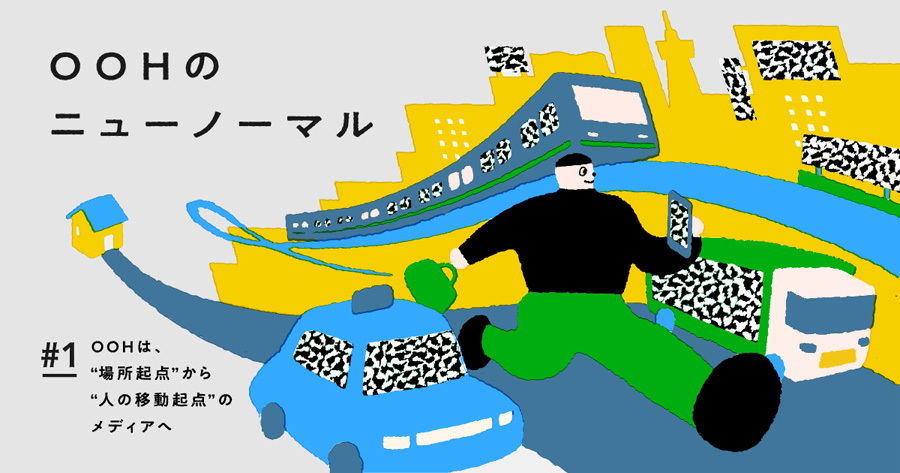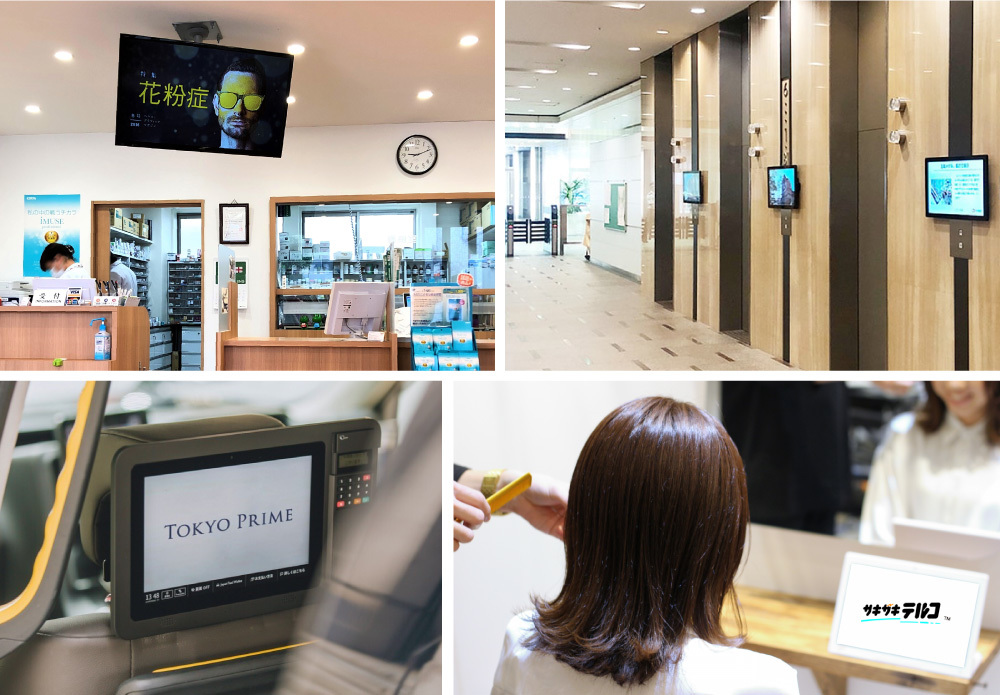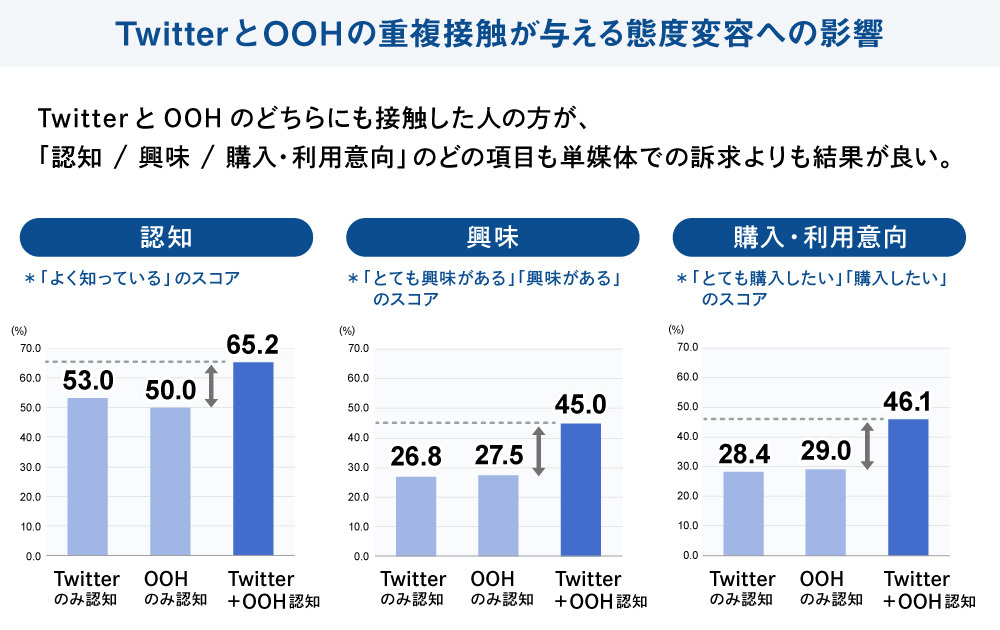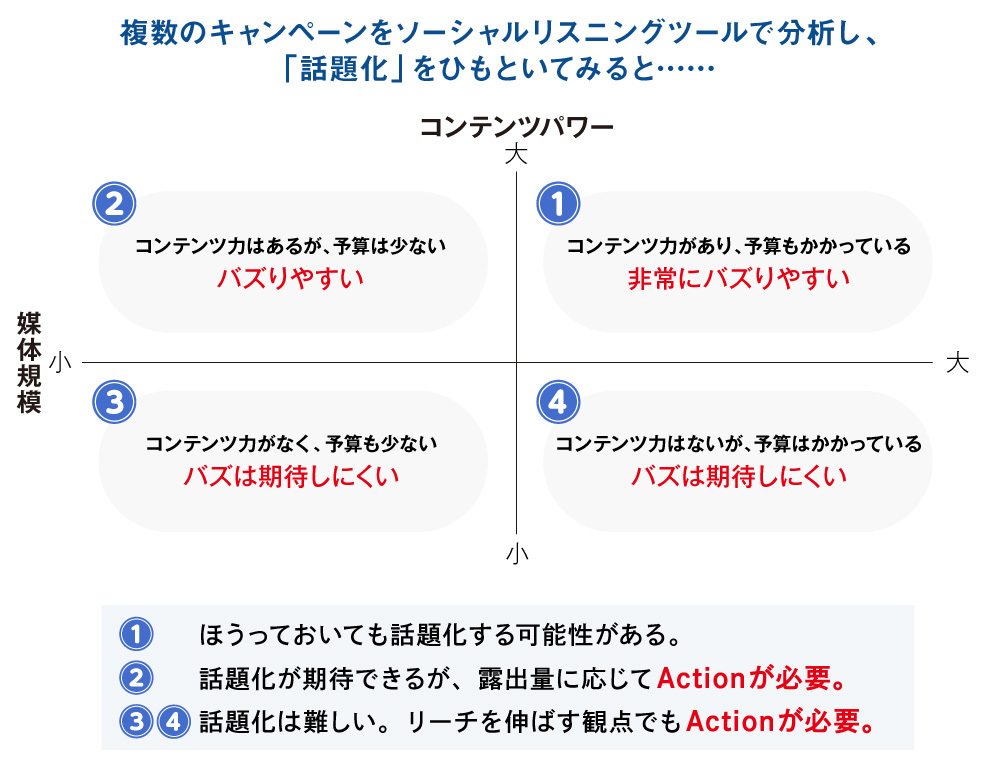Note: This website was automatically translated, so some terms or nuances may not be completely accurate.
OOH is shifting from a "location-based" to a "people-in-motion" medium.

What image comes to mind when you think of OOH?
OOH (Out Of Home) translates to "outdoor advertising," referring to the media that delivers advertising exposure outside the home, as well as the advertisements displayed on them. Specifically, this includes outdoor billboards in cities and advertisements in stations and on trains.
I transferred to Dentsu Inc. Out-of-Home Media Division late last year. Until then, my understanding of OOH was rather vague, limited mostly to learning its usage and trends through international advertising awards. However, the more I learned, the more I realized OOH is in a transitional phase—a medium brimming with potential for new products and services.
While OOH faces challenges due to the COVID-19 pandemic's impact—including reduced outings and travel restrictions for foreign visitors—the digital transformation (DX) that began before the pandemic is accelerating within the OOH sector. This series will explore the new standards and new normal for the OOH industry from fresh perspectives. In this first installment, we'll consider what OOH is while briefly examining the current landscape.
<Table of Contents>
▼OOH = Outdoor Advertising? The Expanding World of OOH
▼Reason 1: Diversification of Installation Locations
▼Reason 2: The Mediaization of All Transportation Methods and Utilization of Mobility Data
▼Reason 3: Increased Advertising Planning Linked with Other Media
▼Reason 4: Measuring OOH Effectiveness is Now Possible
▼OOH is evolving into communication that follows consumers' movement patterns
OOH = Outdoor Advertising? The Expanding World of OOH
While preparing this series, our PR department asked, "Isn't the scope of OOH expanding?" While our Out-of-Home Media Division primarily handles outdoor and transit advertising, reviewing OOH releases from various companies confirms this expansion.
Outdoor billboards in busy downtown areas and ads in stations and trains remain core OOH media, popular for their high creative impact.
When it comes to media targeting people outside their homes, virtually anything has the potential to become a medium. That moment when you unexpectedly encounter an ad you like in the city can be surprisingly memorable. The appeal of OOH lies in creating experiences that aren't just simple media exposure; they become imprinted in memory alongside the emotions of that specific time and place.
On the other hand, the sheer breadth of possibilities means many areas remain untapped. The reality is that measuring effectiveness is challenging because advertising transactions vary significantly by location, size, and the context of exposure.
OOH has gradually been digitized over the past 20 years. With the widespread adoption of networked DOOH (Digital Out Of Home = advertising using digital signage), it's now so widely used that it's unclear whether such media should even be considered part of OOH... . Four reasons underlie this expansion of OOH.
Reason ①: Diversification of Installation Locations
Beyond city streets, advertising has started appearing in places where signage wasn't previously found, such as supermarket checkout areas, drugstores, hair salons, apartment buildings, offices, and elevators, over the past few years.

These media platforms can deliver ads to people gathered for specific purposes, promising high appeal. Recently, digital companies handling internet advertising have increasingly entered the market as media providers. This has incorporated internet advertising concepts into DOOH purchasing methods, shifting from reservation-based orders for specified periods to impression-based (viewer count) performance advertising.
For example, LIVE BOARD Inc., established in 2019 with investment from NTT DOCOMO and Dentsu Inc. , handles impression-based DOOH. LIVE BOARD's latest initiatives will also be covered in this series.
Reason 2: Media Integration Across All Transportation Modes and Utilization of Mobility Data
Advertising options are expanding beyond train cars to include buses, airplanes, taxis, shared bicycles, and more. Taxi advertising, in particular, has established itself as a medium for promoting B2B products and remains popular even during the pandemic.
OOH is also gaining attention as a monetization method for MaaS (Mobility as a Service), the next-generation transportation service seamlessly connecting various modes of transport. Dentsu Inc. has formed a business partnership with Mobility Technologies Inc. (*1) to explore new approaches to OOH. Beyond leveraging consumer mobility data to improve transfers, capturing moments during travel—instants when engagement with products or services peaks—opens new marketing possibilities tied to specific locations.
*1 Mobility Technologies: Engages in mobility-related businesses, including providing dispatch systems for taxi operators and other transportation providers.
Reason 3: Increased Advertising Planning Linked with Other Media
While OOH itself is only visible to those physically present, when consumers post about it on social media like Twitter or Instagram, it reaches a wider audience. This makes OOH a "buzz medium." Large posters or digital signage in bustling areas like Shibuya, Shinjuku, Ikebukuro, or inside stations naturally grab attention. If it features a favorite artist or appealing visuals, people are even more inclined to take photos.
Twitter and OOH are particularly well-suited, leading to bundled advertising packages. Campaign announcements can be made via OOH, with reactions gathered on Twitter. Leveraging both creates a synergy that amplifies overall excitement.

We often receive requests like "We want to create buzz with OOH!" So, the Out-of-Home Media Division analyzed multiple campaigns using social listening tools to uncover the drivers of "trending topics."
Mapping campaigns with media scale on the horizontal axis and content power on the vertical axis revealed the following trends. Note that content power refers to elements with high recognition or relatability among consumers, such as specific individuals, characters, anime, or brands.

Campaigns with low content power struggle to generate organic post volume. Therefore, in addition to OOH, specific actions are necessary—such as social media posts from official accounts or issuing press releases to media outlets— . By linking OOH with other media in this way, it's possible to enhance advertising effectiveness.
Reason ④: OOH Effectiveness Can Now Be Measured
Historically, OOH struggled with measuring effectiveness post-placement. However, recent advancements now enable effectiveness measurement based on location data. Dentsu Inc. partnered with Ground Truth, a company possessing a location-based marketing platform, in 2018. While adhering to various guidelines regarding location data usage, Dentsu Inc. now conducts effectiveness measurement and integrated planning that combines location data with TV, digital, and OOH.
By integrating with Dentsu Inc.'s data management platform "People Driven DMPⓇ" (*2), it is now possible to calculate the incremental reach (the net increase in reach for a specific ad) of OOH alongside TV and digital. It also tracks how many people visited a site or downloaded an app after seeing OOH. The ability to verify effectiveness enables planning for future campaigns based on these results, allowing for a PDCA cycle and efficient, cost-effective advertising.
※2: People Driven DMP®: A People Driven Marketing® data platform that enables the utilization of audience data from PCs and smartphones, combined with STADIA's TV viewing log data, web ad exposure data, OOH ad exposure data, radio listening logs, panel data, purchase data, location data, and more, all centered around the individual (People).
OOH: Communication Aligned with Consumer Movement Patterns
The expansion of OOH holds potential beyond the physical world into digitally created environments. Last year saw the launch of "Virtual Shibuya," a platform virtualizing the Shibuya district. The experience of freely exploring this VR-rendered Shibuya with a custom avatar or participating in live events together offers a fresh perspective.
Similar to Nintendo's "Animal Crossing: New Horizons," more companies and organizations are utilizing game worlds for marketing activities. This year's Cannes Lions, the world's largest advertising awards, also showed a clear trend of using games for advertising communication, indicating an international movement. As virtual spaces gain more functionality, mirroring real cities, and as the number of people constantly moving through them increases, they have the potential to become significant OOH media.
Furthermore, the integration of audio streaming media with OOH, which is also growing domestically, is an area to watch. Audio media, heard through the ears, is said to be a good complement to visual OOH. While listeners are on the move, they launch audio media apps like radio or social media and listen to content; audio ads are delivered during this time. If the delivery timing and the listener's location data can be obtained, synchronization with OOH becomes possible.
Traditionally, OOH has delivered messages at fixed locations (points). However, as data and technology enable the tracking of people's movements, each location (point), whether real or virtual, can become organically connected. This allows for communication design that incorporates consumers' actual movement patterns. By combining not only digital signage but also commonly used devices like transportation and smartphones, it is now possible to create promotional activities, product understanding, and brand experiences that involve real-life interactions, distinct from TV or digital advertising.
OOH has traditionally been viewed as "advertising outside the home," a location-based concept. Moving forward, it will evolve into a "media driven by human movement," broadly covering consumers' journeys.
Starting next time,
・OOH in the COVID-19 Era
・Integrated media planning for OOH
The current state of programmatic OOH seen through LIVE BOARD
・Railway company OOH
・New trends in DOOH
We'll introduce the new standards and new normal for OOH. Stay tuned.
Was this article helpful?
Newsletter registration is here
We select and publish important news every day
For inquiries about this article
Author

Kana Misawa
Dentsu Inc.
Out-of-Home Media Division
After working in creative, sports business, AI chatbot, and healthcare business development, he assumed his current position. He is involved in developing media planning tools centered on OOH and business development in the data and technology domain. Ph.D. (Interdisciplinary Information Studies)


